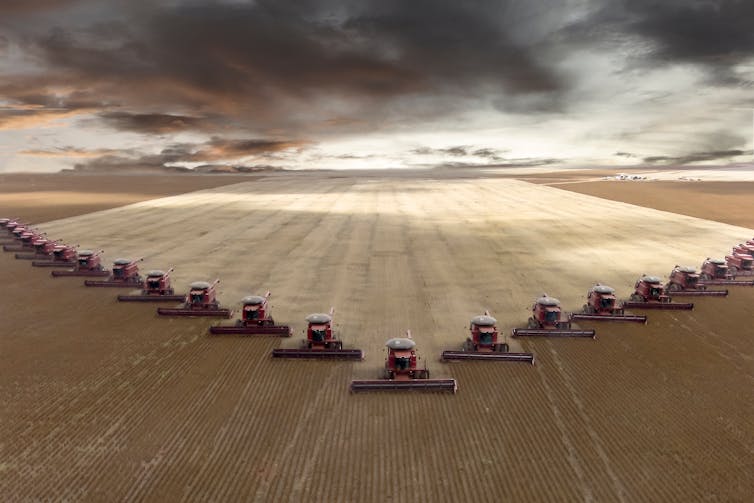Jair Bolsonaro has been defeated in the Brazilian election against Luiz Inácio Lula da Silva (“Lula”) to the rejoicing of scientists, environmentalists, and human rights activists in Brazil and beyond. What happens in South America’s largest country is globally significant since, among other reasons, the country contains most of the world’s largest tropical forest.
Under Lula, Brazil was able to reduce deforestation in the Amazon by 84% between 2004 to 2013 and expand indigenous rights and protection. Lula promised in his acceptance speech to work toward zero deforestation in the Amazon and to protect indigenous areas from the encroachment of mining companies and other interests. Great news.
Dozens of countries and hundreds of companies and financial actors have already made bold commitments to halt deforestation. For example, Unilever aims to achieve zero conversion of native ecosystems for palm oil, paper and board, tea, soy and cocoa by the end of 2023.
But, to date, such pledges have lacked any teeth in most at-risk areas. Famously, in 2014 the New York Declaration on Forests, a coalition of committed companies, countries, civil society and indigenous groups, pledged to eliminate commodity-driven deforestation by 2020. But in 2021 the group pushed back its deadline until 2030, and many deforestation activists are sceptical that this deadline will be achieved.
Little progress so far
Thus far, even the most ambitious and well-implemented commitments have made little progress. Research colleagues and I published in October looked at the impact of the soy moratorium, a commitment by global traders and the Brazilian industry to stop purchasing soy produced on Amazonian forest lands cleared after 2006. Brazil’s huge soy industry is the second largest driver of deforestation after beef.

We found that deforestation directly for soy in the Amazon was reduced by 55% between 2006 and 2015. For many companies, this was a very useful achievement as it helped them meet their goals of not sourcing deforestation-linked soy.
Yet it did little to protect the Amazon overall since there are other drivers of deforestation and many forest areas with the potential to produce soy were not covered by the commitments. The total avoided deforestation amounted to only 1.6% of the deforestation in the Amazon and less than 1% of all of the deforestation in Brazil during the same period.
In fact, our other research published in September has shown that half of the avoided deforestation in the Amazon was offset by deforestation “leakage” into the Cerrado (a huge savanna region to the south and east of the Amazon) and other forest regions in Brazil.
Colleagues and I have also published research on similar commitments made by cattle companies, which are even less effective than those for soy. However, given the magnitude of cattle-driven deforestation in the Amazon, such policies at least helped to avoid another 3% of Brazilian deforestation.
These deforestation reductions are meaningful. But they still leave us far from the goal of zero deforestation, which is needed to avoid potentially catastrophic tipping points in the Amazon.
Three reasons for failure (so far)
There are three crucial reasons why these existing pledges have failed to do more to protect the world’s tropical forests. First, existing commitments cover less than 50% of forests at risk in Brazil and likely an even smaller proportion of forests in other countries.
More companies that source deforestation-risk products, especially small and medium-sized enterprises, need to adopt zero-deforestation policies. Otherwise, farmers still have ample opportunities to sell their products grown on deforested lands and avoid committed companies.
Second, many of the companies that have made bold global commitments have yet to implement these policies outside of the Amazon and parts of Indonesia and face many implementation challenges to trace and monitor their products. This leaves a major portion of the world’s tropical forests still at risk from agricultural expansion.
Third, deforestation can leak across areas and actors within a region. For instance, when companies crack down on deforestation in only one ecosystem for only one commodity, deforestation for that commodity may simply increase in the area next door or shift to farms growing products not covered by the policy.
This is the case for the soy moratorium in the Amazon, which led to additional deforestation in the Cerrado. It is also the case for oil palm sustainability certification programs, which reduced deforestation in targeted areas in Kalimantan, Indonesia, but caused additional clearing of rainforest elsewhere in Borneo.
…and four reasons to be hopeful
Lula’s election is pivotal to filling these gaps, at least in Brazil. For instance, the new president plans to improve deforestation governance, which will make it much easier both politically and financially for companies to comply with or implement their zero-deforestation commitments. Supportive public policy may encourage more companies to commit in more regions of Brazil.
Lula also plans to significantly reduce the power of the Brazilian agricultural lobby, even if it will continue to control a large part of congress. The lobby has fought virulently against an expansion of zero deforestation efforts.
The new president can also help to implement Brazil’s new payment for environmental services policy framework and channel resources towards jurisdictions that work with companies to help monitor and enforce zero deforestation. Finally, Lula will be able to attract more international finance to end deforestation in Brazil, which is a necessary complement to individual companies’ supply chain policies.
With this momentum, zero deforestation in the Amazon may become a reality and inspire hope for other at-risk ecosystems throughout the world.
Rachael Garrett receives funding from the European Research Council and Swiss National Science Foundation.
This article was originally published on The Conversation. Read the original article.







